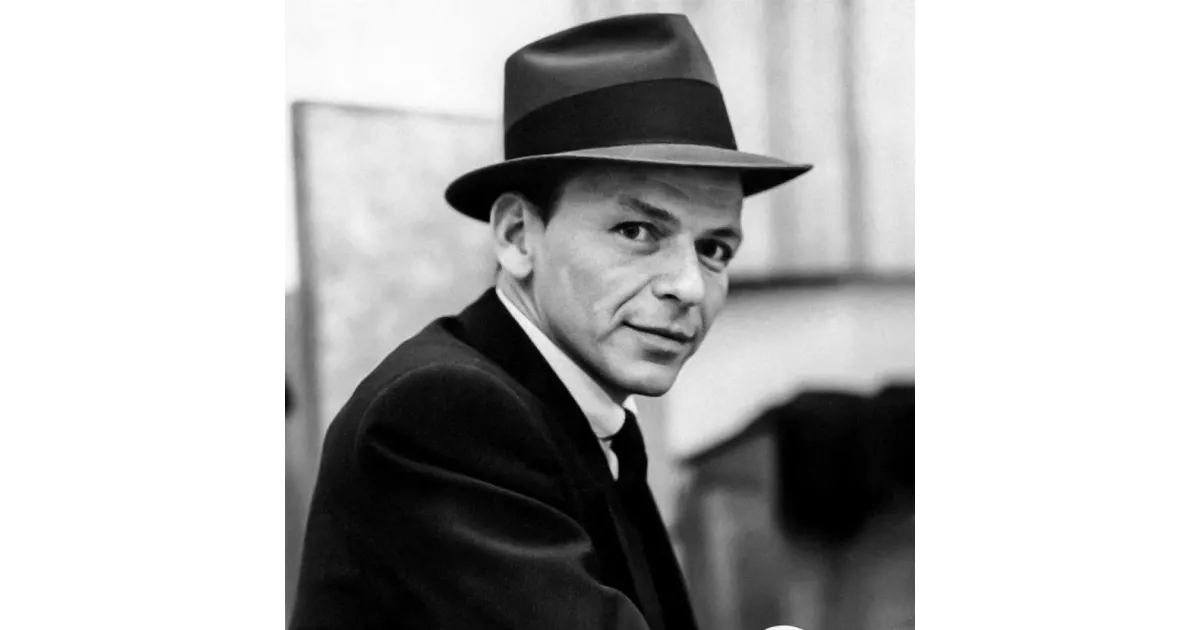Frank Sinatra, nicknamed "Chairman of the Board" and "Ol' Blue Eyes", was a highly popular and influential American singer and actor of the 20th century. He is considered one of the best-selling music artists globally, with estimated record sales of 150 million. Sinatra's impact on music and entertainment remains significant.
1938: Friendship with Joseph Fischetti begins
From 1938 onward, Frank Sinatra maintained a close friendship with mobster Joseph Fischetti, whom she considered like "Sicilian brothers".
1941: Film Debut in 'Las Vegas Nights'
In 1941, Frank Sinatra made his film debut performing in an uncredited sequence in 'Las Vegas Nights', singing "I'll Never Smile Again" with Tommy Dorsey's Pied Pipers.
1942: Partnership with Sammy Cahn and Jule Styne
From 1942 until 1954, Frank Sinatra recorded 24 songs composed by Jule Styne with lyrics by Sammy Cahn.
1943: Cameo Role in 'Reveille with Beverly'
In 1943, Frank Sinatra had a cameo role in 'Reveille with Beverly', singing "Night and Day".
1944: Campaigning for the Democrats
After meeting President Franklin D. Roosevelt in 1944, Frank Sinatra heavily campaigned for the Democrats in the 1944 presidential election.
1944: Leading Roles in 'Higher and Higher' and 'Step Lively'
In 1944, Frank Sinatra was given leading roles in 'Higher and Higher' and 'Step Lively' for RKO.
November 1945: Involvement in Froebel High School strike
In November 1945, Frank Sinatra was invited to Gary, Indiana, to try to settle a strike at Froebel High School regarding racial policies, leading to accusations of being a communist.
1945: Starring Role in 'Anchors Aweigh'
In 1945, Frank Sinatra starred opposite Gene Kelly and Kathryn Grayson in the musical 'Anchors Aweigh', playing a sailor on leave in Hollywood. The song "I Fall in Love Too Easily", sung by Sinatra in the film, was nominated for the Academy Award for Best Original Song.
1946: Attendance at the Mafia Havana Conference
In 1946, Frank Sinatra attended the Mafia Havana Conference with Lucky Luciano, resulting in negative press with headlines like "Shame, Sinatra".
1946: Appearance in 'Till the Clouds Roll By'
In 1946, Frank Sinatra briefly appeared in 'Till the Clouds Roll By', singing "Ol' Man River".
October 30, 1947: Awarded Key to the City in Hoboken
On October 30, 1947, Frank Sinatra was awarded the Key to the City by Mayor Fred M. De Sapio in his native Hoboken.
1947: Fight with Lee Mortimer
In 1947, Frank Sinatra received negative press for a fight with Lee Mortimer.
1948: Campaigning for Harry S. Truman
In 1948, Frank Sinatra actively campaigned for President Harry S. Truman.
1949: Starring in 'Take Me Out to the Ball Game' and 'On the Town'
In 1949, Frank Sinatra co-starred with Gene Kelly in 'Take Me Out to the Ball Game' and 'On the Town', playing baseball players and a sailor on leave in New York City, respectively.
1949: Awarded the Hollzer Memorial Award
In 1949, Frank Sinatra was awarded the Hollzer Memorial Award by the Los Angeles Jewish Community.
1950: Fight with photographer Eddie Schisser
In 1950, Frank Sinatra had a violent incident with photographer Eddie Schisser in Houston, leading to negative press.
1951: Appearance in 'Double Dynamite'
In 1951, Frank Sinatra appeared in 'Double Dynamite', an RKO comedy produced by Howard Hughes.
1952: Appearance in 'Meet Danny Wilson'
In 1952, Frank Sinatra appeared in 'Meet Danny Wilson'.
1952: Campaigning for Adlai Stevenson
In 1952, Frank Sinatra campaigned for Adlai Stevenson.
1953: Sinatra's Visit to Frenchay Hospital
In 1953, Frank Sinatra visited Frenchay Hospital, which used to sit at the site of a new housing development. This visit was later commemorated in 2024 with a road being named after him.
1953: Split with Ava Gardner
In 1953, Frank Sinatra's split with Ava Gardner had a profound impact on the types of songs he sang and on his voice. He began to console himself in songs with a "brooding melancholy".
1954: Fight with Judy Garland's publicist Jim Byron
In 1954, Frank Sinatra was involved in a fight with Judy Garland's publicist, Jim Byron, on the Sunset Strip, contributing to negative press.
1954: Jimmy Van Heusen Succeeds Jule Styne
In 1954, Jimmy Van Heusen succeeded Jule Styne as Frank Sinatra's main composer.
June 1955: Support for Lee J. Cobb after heart attack
In June 1955, after Lee J. Cobb suffered a heart attack, Frank Sinatra provided him with gifts, paid his hospital bills, and offered encouragement during his recovery.
1956: Campaigning for Adlai Stevenson
In 1956, Frank Sinatra campaigned for Adlai Stevenson.
1958: Release of Come Fly with Me and Frank Sinatra Sings for Only the Lonely
In 1958, Frank Sinatra released "Come Fly with Me", a concept album with Billy May, which topped the Billboard chart and was nominated for a Grammy. On May 29, he recorded seven songs in one session. In September 1958, he also released "Frank Sinatra Sings for Only the Lonely", a collection of saloon songs and ballads that was commercially successful and remained on the Billboard chart for 120 weeks.
May 1959: Sinatra Writes Article for Inter-Racial Friendship
In May 1959, Frank Sinatra wrote an article titled "You Can't Hate and be Happy" for "What the Stars Say", a publication by the Stars Campaign for Inter-Racial Friendship, following the murder of Kelso Cochrane in London.
September 19, 1959: Sinatra Hosts Luncheon for Nikita Khrushchev
On September 19, 1959, Frank Sinatra was asked by 20th Century Fox to be the master of ceremonies at a luncheon attended by Soviet Premier Nikita Khrushchev.
1959: Release of Come Dance with Me!
In 1959, Frank Sinatra released "Come Dance with Me!", a critically acclaimed album that remained on Billboard's Pop album chart for 140 weeks and won a Grammy Award for Album of the Year.
October 1960: Release of Nice 'n' Easy
In October 1960, Frank Sinatra's album "Nice 'n' Easy", a collection of ballads, topped the Billboard chart and remained there for 86 weeks, receiving critical acclaim.
1960: Purchase of share in Cal Neva Lodge & Casino
In 1960, Frank Sinatra bought a share in the Cal Neva Lodge & Casino at Lake Tahoe and built the Celebrity Room theater.
January 1961: Organization of Inaugural Gala for John F. Kennedy
In January 1961, Frank Sinatra and Peter Lawford organized the Inaugural Gala in Washington, D.C., for President John F. Kennedy.
January 27, 1961: Benefit show for Martin Luther King Jr.
On January 27, 1961, Frank Sinatra played a benefit show at Carnegie Hall for Martin Luther King Jr.
February 1961: Release of Ring-a-Ding-Ding! and Other Reprise Albums
In February 1961, Frank Sinatra's label, Reprise Records, released his album "Ring-a-Ding-Ding!", which was a major success, along with albums by Ben Webster, Sammy Davis Jr., Mavis River, and Joe E. Lewis.
1961: Performances for Mexican Charities
In 1961, Frank Sinatra traveled to Mexico to perform for Mexican charities.
1962: Reportedly held 50-percent share in Cal Neva Lodge & Casino
By 1962, Frank Sinatra reportedly held a 50-percent share in the Cal Neva Lodge & Casino.
1962: Collaboration with Count Basie
In 1962, Frank Sinatra collaborated with Count Basie for the successful album "Sinatra-Basie".
1962: Release of Sinatra and Strings
In 1962, Frank Sinatra released "Sinatra and Strings", a critically acclaimed album of standard ballads arranged by Don Costa.
1962: Performances for Mexican Charities
In 1962, Frank Sinatra traveled to Mexico to perform for Mexican charities.
1962: Snub by John F. Kennedy
In 1962, Frank Sinatra was snubbed by President John F. Kennedy, who stayed with Bing Crosby instead of Sinatra in Palm Springs due to FBI concerns.
1963: Release of The Concert Sinatra
In 1963, Frank Sinatra reunited with Nelson Riddle for "The Concert Sinatra", an album featuring a 73-piece symphony orchestra. The recording employed multiple synchronized recording machines using an optical signal onto 35 mm film for movie soundtracks.
1963: Suspension of gambling license and relinquishing of casino shares
In 1963, Frank Sinatra's gambling license was temporarily suspended after Giancana was spotted at the Cal Neva Lodge & Casino, leading him to give up his shares in Cal Neva and the Sands.
1963: King wept at Sinatra concert
In 1963, Martin Luther King Jr. sat weeping in the audience at one of Frank Sinatra's concerts as Sinatra sang "Ol' Man River".
July 1964: Dedication of the Frank Sinatra International Youth Center
In July 1964, Frank Sinatra attended the dedication of the Frank Sinatra International Youth Center for Arab and Jewish children in Nazareth.
June 1965: Benefit Concert for Dismas House
In June 1965, Frank Sinatra, along with Sammy Davis Jr. and Dean Martin, performed live in St. Louis to benefit Dismas House, a prisoner rehabilitation and training center.
September 1965: Release of September of My Years and The Frank Sinatra Spectacular
In September 1965, Frank Sinatra released the album "September of My Years", which won the Grammy Award for best album of the year. Also the Rat Pack concert, called The Frank Sinatra Spectacular, was broadcast live via satellite to numerous movie theaters across America
1965: Appearance at the Newport Jazz Festival
In 1965, Frank Sinatra and Count Basie performed together at the Newport Jazz Festival.
February 1966: Recording Sinatra at the Sands
In February 1966, Frank Sinatra's first live album, "Sinatra at the Sands", was recorded at the Sands Hotel and Casino in Las Vegas, backed by the Count Basie Orchestra and conducted by Quincy Jones.
1966: Donation to Youth Center in Jerusalem
In 1966, Frank Sinatra donated his $50,000 fee for appearing in a cameo role in "Cast a Giant Shadow" to the Youth Center in Jerusalem.
February 8, 1967: Teamsters Charity Concert
On February 8, 1967, Frank Sinatra performed at a Teamsters annual charity concert in St. Louis, Missouri, to benefit the Dismas Clark Half-Way House, featuring the Rat Pack with Sammy Davis Jr. and Dean Martin.
1967: Recording Sessions with Antônio Carlos Jobim and Release of Francis Albert Sinatra & Antônio Carlos Jobim
In 1967, Frank Sinatra started the year with recording sessions with Antônio Carlos Jobim and released "Francis Albert Sinatra & Antônio Carlos Jobim", which was a best-selling album and Grammy nominated.
1968: Recording of My Way
In 1968, Frank Sinatra recorded "My Way", written by Paul Anka using the melody of the French "Comme d'habitude", in one take.
1968: Working with Hubert H. Humphrey
In 1968, Frank Sinatra worked with Hubert H. Humphrey and remained a supporter of the Democratic Party.
April 1969: My Way Charts in the UK
In April 1969, "My Way" entered the UK charts, beginning a long run of 122 weeks.
1969: Recordings of Contemporary Songs
In 1969, Frank Sinatra recorded songs by Paul Simon ("Mrs. Robinson"), the Beatles ("Yesterday"), and Joni Mitchell ("Both Sides, Now") to maintain commercial viability.
1969: The Godfather novel published
In 1969, Mario Puzo's novel "The Godfather" was published. Sinatra believed the character Johnny Fontane was based on him.
November 2, 1970: Last Songs Recorded Before Retirement
On November 2, 1970, Frank Sinatra recorded his last songs for Reprise Records before announcing his retirement the following June.
1970: Release of Watertown
In 1970, Frank Sinatra released "Watertown", a critically acclaimed concept album, though it was not commercially successful.
1970: Endorsement of Ronald Reagan
In 1970, although still a registered Democrat, Frank Sinatra endorsed Republican Ronald Reagan for a second term as Governor of California.
1970: Shift in political affiliations
In 1970, when Frank Sinatra changed his political affiliations, he became less outspoken on racial issues.
September 1971: My Way Ends Chart Run in UK
In September 1971, "My Way" ended its chart run in the UK after 122 weeks.
1971: Sinatra & Company Album and appreciation for Alec Wilder's compositions
In 1971, Critic Gene Lees expressed amazement when he heard Sinatra's recording of "This Happy Madness" on Sinatra & Company, considering him to have delivered the lyrics to perfection. By the mid-1940s, Sinatra was the conductor at Columbia Records for six of Wilder's compositions.
1971: Sinatra & Company Album
In 1971, Frank Sinatra recorded John Denver's "Leaving on a Jet Plane" and "My Sweet Lady" for the Sinatra & Company album.
July 1972: Support for Richard Nixon
In July 1972, Frank Sinatra officially changed his political allegiance and supported Richard Nixon in the 1972 presidential election.
October 20, 1972: Performance at Young Voters Rally
On October 20, 1972, Frank Sinatra performed "My Kind of Town" at a Young Voters Rally in Chicago at the request of President Richard Nixon.
November 1, 1972: Raised money for Israel and received Medallion of Valor
On November 1, 1972, Frank Sinatra raised $6.5 million in bond pledges for Israel and was given the Medallion of Valor for his efforts.
1972: Sinatra confronts Mario Puzo
In 1972, Sinatra confronted Mario Puzo at Chasen's restaurant, allegedly shouting abuse and accusing him of being a "pimp" due to the character Johnny Fontane in "The Godfather".
1973: Comeback with Television Special and Album
In 1973, Frank Sinatra came out of retirement with a television special, "Magnavox Presents Frank Sinatra", and released the album "Ol' Blue Eyes Is Back", both of which were successful.
1973: Confrontation with Maxine Cheshire
In 1973, Frank Sinatra confronted Washington Post journalist Maxine Cheshire, making offensive remarks and receiving negative press.
October 1974: Madison Square Garden Concert
In October 1974, Frank Sinatra performed at Madison Square Garden in New York City, which was televised and later released as the album "The Main Event – Live", backed by Woody Herman and the Young Thundering Herd.
1975: Concerts with Count Basie, Ella Fitzgerald, Sarah Vaughan, and John Denver
In 1975, Frank Sinatra performed concerts in New York with Count Basie and Ella Fitzgerald, and at the London Palladium with Basie and Sarah Vaughan, and in Tehran at Aryamehr Stadium. He gave 140 performances in 105 days. In August 1975, he held several concerts at Lake Tahoe with John Denver.
1976: Reunion of Dean Martin and Jerry Lewis and Awards
During Labor Day weekend in 1976, Frank Sinatra reunited Dean Martin and Jerry Lewis at the "Jerry Lewis MDA Telethon". In 1976, The Friars Club selected Sinatra as the "Top Box Office Name of the Century", and he received the Scopus Award from the American Friends of the Hebrew University of Jerusalem and an honorary Doctor of Humane Letters from the University of Nevada.
1976: Induction into the Catholic Sovereign Military Order of Malta
In 1976, despite his earlier criticisms of the church, Frank Sinatra was inducted into the Catholic Sovereign Military Order of Malta.
January 1977: Death of Dolly Sinatra and Royal Albert Hall Performance
In January 1977, Frank Sinatra's mother, Dolly, died in a plane crash while traveling to see him. He canceled shows and spent time in Barbados. In March 1977, he performed at the Royal Albert Hall in London, raising money for charity.
1977: Turn to Catholicism after mother's death
In 1977, after his mother died in a plane crash, Frank Sinatra turned to Catholicism for healing.
1978: Lawsuit Against Land Developer
In 1978, Frank Sinatra filed a $1 million lawsuit against a land developer for using his name in the "Frank Sinatra Drive Center" in West Los Angeles.
1978: Dedication of Frank Sinatra International Student Center
In 1978, The Frank Sinatra International Student Center at Israel's Hebrew University in Jerusalem was dedicated.
1978: Dedication of the Frank Sinatra Student Center
In 1978, the Frank Sinatra Student Center at the Hebrew University of Jerusalem was dedicated in his name.
1979: Awards and Performance in Egypt
In 1979, during a party at Caesars, Frank Sinatra was awarded the Grammy Trustees Award, celebrating 40 years in show business and his 64th birthday. Also in 1979, former President Gerald Ford awarded Sinatra the International Man of the Year Award, and he performed in front of the Egyptian pyramids for Anwar Sadat, raising money for charity.
1980: Release of 'Trilogy: Past Present Future' Album
In 1980, Frank Sinatra's first album in six years, 'Trilogy: Past Present Future', was released. The triple album featured songs from pre-rock and rock eras and garnered six Grammy nominations, winning for best liner notes. The album also spawned "Theme from New York, New York".
1980: Donation to Ronald Reagan's campaign
In the 1980 presidential election, Frank Sinatra donated $4 million to Ronald Reagan's campaign and arranged Reagan's Presidential gala.
February 1981: Restoration of gambling license
In February 1981, Frank Sinatra's gambling license was restored following support from Ronald Reagan.
1981: Success of 'She Shot Me Down' Album and Controversy in Sun City
In 1981, Frank Sinatra built on the success of Trilogy with 'She Shot Me Down', an album praised for its tone. Also in 1981, Sinatra faced controversy for performing in Sun City, Bophuthatswana, during the apartheid era, breaking a cultural boycott. He received the Order of the Leopard and was made an honorary tribal chief by President Lucas Mangope.
1982: Deal with the Golden Nugget of Las Vegas
In 1982, Frank Sinatra signed a $16 million three-year deal with the Golden Nugget of Las Vegas.
September 21, 1983: Lawsuit Against Kitty Kelley
On September 21, 1983, Frank Sinatra filed a $2 million court case against Kitty Kelley before her unofficial biography, 'His Way', was published.
1983: Kennedy Center Honors
In 1983, Frank Sinatra was honored at the Kennedy Center Honors alongside Katherine Dunham, James Stewart, Elia Kazan, and Virgil Thomson. President Reagan quoted Henry James in honoring Sinatra.
June 1984: Performance at the White House State Dinner
In June 1984, Frank Sinatra performed at the State Dinner in the White House honoring Sri Lankan President J. R. Jayawardena at the invitation of Ronald Reagan.
September 19, 1984: Dropped case against Kitty Kelley
On September 19, 1984, Frank Sinatra was forced to drop his case against Kitty Kelley, with several leading newspapers expressing concerns about censorship.
1984: Honorary Doctorate of Fine Arts from Loyola Marymount University
In 1984, Frank Sinatra received an Honorary Doctorate of Fine Arts from Loyola Marymount University.
1984: Collaboration with Quincy Jones and Release of 'L.A. Is My Lady'
In 1984, Frank Sinatra worked with Quincy Jones on the album 'L.A. Is My Lady', which was well-received critically. The album was a substitute for an album of duets with Lena Horne, which had to be abandoned.
January 1985: Reconciliation with Nelson Riddle
In January 1985, Frank Sinatra and Nelson Riddle reconciled at a dinner for Ronald Reagan, after a major falling out. Sinatra asked Riddle to make another album with him, but Riddle died before they could record.
1985: Honorary Doctorate of Engineering from the Stevens Institute of Technology
In 1985, Frank Sinatra received an Honorary Doctorate of Engineering from the Stevens Institute of Technology.
1985: Awarded the Presidential Medal of Freedom
In 1985, Frank Sinatra was awarded the Presidential Medal of Freedom by Ronald Reagan.
1986: Collapse on Stage and Rat Pack Reunion Tour
In 1986, Frank Sinatra collapsed on stage in Atlantic City and was hospitalized for diverticulitis. Two years later, he reunited with Martin and Davis for the Rat Pack Reunion Tour.
1986: Colon Surgery
In 1986, Frank Sinatra's daughter Tina Sinatra blamed Kitty Kelley and her book 'His Way' for her father's colon surgery.
June 6, 1988: Last Recordings with Reprise
On June 6, 1988, Frank Sinatra made his last recordings with Reprise for an unreleased album, including "My Foolish Heart" and "Cry Me a River".
1989: Plaque Placed in Frank Sinatra Park
In 1989, a bronze plaque was placed in Frank Sinatra Park in Hoboken upon its opening.
1990: Ella Award and Performance with Ella Fitzgerald
In 1990, Frank Sinatra was awarded the second "Ella Award" by the Los Angeles-based Society of Singers and performed for a final time with Ella Fitzgerald at the award ceremony.
1991: Active Touring Schedule
In 1991, Frank Sinatra maintained an active touring schedule, performing 73 concerts in seventeen countries.
1992: CBS Airs "Sinatra" Miniseries
In 1992, CBS aired a television miniseries based on Frank Sinatra's life, titled "Sinatra." The series was directed by James Steven Sadwith and starred Philip Casnoff as Sinatra.
1992: Active Touring Schedule
In 1992, Frank Sinatra maintained an active touring schedule, performing 84 concerts in seventeen countries.
1993: Return to Capitol Records and Release of 'Duets'
In 1993, Frank Sinatra returned to Capitol Records and released 'Duets', which became his best-selling album. The album featured Sinatra remaking his classic recordings with contemporary performers.
March 1994: Fainting Onstage in Richmond, Virginia
During his tours, in March 1994, Frank Sinatra fainted onstage in Richmond, Virginia, due to memory lapses during concerts.
1994: Legend Award at the Grammy Awards
In 1994, Frank Sinatra was awarded the Legend Award at the Grammy Awards, where he was introduced by Bono.
February 25, 1995: Final Performance Before a Live Audience
On February 25, 1995, Frank Sinatra sang for the last time before a live audience at the Palm Desert Marriott Ballroom during the Frank Sinatra Desert Classic golf tournament.
1995: Release of 'The Complete Reprise Studio Recordings'
In 1995, take number 18 of "My Foolish Heart", recorded on June 6, 1988, was released on 'The Complete Reprise Studio Recordings'.
1995: 80th Birthday Celebration
In 1995, to mark Frank Sinatra's 80th birthday, the Empire State Building glowed blue. A birthday tribute, Sinatra: 80 Years My Way, was held at the Shrine Auditorium in Los Angeles, featuring various performers singing his songs. Sinatra performed on stage for the last time, singing the final notes of "Theme from New York, New York".
February 1997: Heart attack and final public appearance
In February 1997, Frank Sinatra suffered a heart attack and made no public appearances following this event.
1997: Election to the Gaming Hall of Fame
In 1997, in recognition of his association with Las Vegas, Frank Sinatra was elected to the Gaming Hall of Fame.
May 20, 1998: Sinatra's Funeral
On May 20, 1998, Frank Sinatra's funeral was held at the Church of the Good Shepherd in Beverly Hills, California, with 400 mourners in attendance and thousands of fans outside.
1998: Ray Liotta portrays Sinatra in "The Rat Pack"
In 1998, Ray Liotta portrayed Frank Sinatra in the movie "The Rat Pack."
1998: Bronze plaque placed at Sinatra's birthplace
Two years before Frank Sinatra's death in 1998, a bronze plaque marks the site of the house where he was born in Hoboken.
2002: Dedication of Frank Sinatra Hall
In 2002, the Frank Sinatra Hall at the USC School of Cinematic Arts in Los Angeles, California, was dedicated.
2003: James Russo and Dennis Hopper portray Sinatra
In 2003, James Russo portrayed Frank Sinatra in "Stealing Sinatra," and Dennis Hopper portrayed him in "The Night We Called It a Day."
2003: Rededication of Hoboken post office
In 2003, the city's main post office in Hoboken was rededicated in Frank Sinatra's honor.
2006: 'On the Town' Ranked Highly
In 2006, the film 'On the Town', starring Frank Sinatra and Gene Kelly, ranked No. 19 on the American Film Institute's list of best musicals.
May 2008: Issuance of Sinatra stamp by USPS
In May 2008, the United States Postal Service issued a 42-cent stamp in honor of Frank Sinatra, commemorating the tenth anniversary of his death.
May 20, 2008: Designation of Frank Sinatra Day
On May 20, 2008, the United States Congress passed a resolution designating May 13 as Frank Sinatra Day.
2008: Opening of Sinatra restaurant
In 2008, Wynn Resorts' Encore Las Vegas resort featured a restaurant dedicated to Sinatra which opened.
2012: Robert Knepper portrays Sinatra in "My Way"
In 2012, Robert Knepper portrayed Frank Sinatra in the film "My Way".
December 2015: CBS Airs Musical Tribute to Mark Sinatra's Centenary
In December 2015, a musical tribute was aired on CBS television to mark Frank Sinatra's centenary.
2018: Rico Simonini portrays Sinatra in "Frank & Ava"
In 2018, Rico Simonini portrayed Frank Sinatra in the film "Frank & Ava", which is based on a play by Willard Manus.
2021: Gravestone changed to "Sleep Warm, Poppa"
As of 2021, Frank Sinatra's gravestone was changed to read "Sleep Warm, Poppa" due to damage caused to the original gravestone under mysterious circumstances.
2021: Dedication of bronze statue in Frank Sinatra Park
In 2021, on December 12, Frank Sinatra's birthday, a 6-foot bronze statue of Sinatra was dedicated in the Frank Sinatra Park.
2023: Rolling Stone's 200 Greatest Singers of All Time
In 2023, Rolling Stone ranked Frank Sinatra at No. 19 on their list of the 200 Greatest Singers of All Time.
2023: Premiere of Sinatra: The Musical
In 2023, the biopic jukebox stage musical titled "Sinatra: The Musical" by Joe DiPietro premiered at the Birmingham Repertory Theatre, starring Tony Award-winning actor Matt Doyle as Sinatra.
2024: Scott Stapp portrays Sinatra in "Reagan"
In 2024, Creed singer Scott Stapp portrayed Frank Sinatra in the feature film "Reagan", a biopic of U.S. President Ronald Reagan.
2024: Sinatra Way Named in North Bristol
In 2024, a new road in North Bristol was named Sinatra Way to commemorate Frank Sinatra.
Mentioned in this timeline
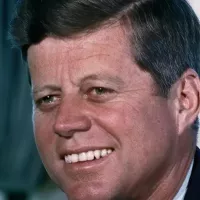
John F Kennedy JFK was the th U S President...
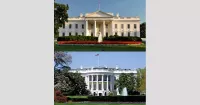
The White House located at Pennsylvania Avenue NW in Washington...
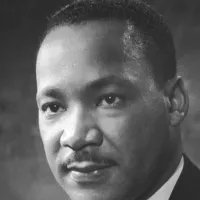
Martin Luther King Jr was a pivotal leader in the...
CBS Broadcasting Inc CBS is a prominent American commercial broadcast...
California is a U S state on the Pacific Coast...
The Kennedy Center Honors are annual awards recognizing individuals and...
Trending

24 minutes ago Morgan Stanley Stock Reaches All-Time High Amidst Oversized Positions, Buy or Wait?

25 minutes ago Kristen Stewart's Bold Fashion Choice and Maverick Award Acceptance Speech Spark Interest.
1 hour ago Akaash Singh's wife, Jasleen, addresses cheating permission rumors and roster allegations online.
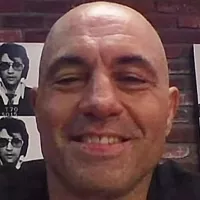
2 hours ago John Cena discusses China apology and Taiwan comments on Joe Rogan's podcast.
2 hours ago CD Projekt Dashes Cyberpunk 2077 Anniversary Teaser Hopes, Confirms No New Content
3 hours ago Battery prices decreased, electric grid more reliable: Storage industry crushes 2025 goals.
Popular
Matt and Ross Duffer known as the Duffer Brothers are...
Aftyn Alyssa Behn is an American politician currently serving as...

XXXTentacion born Jahseh Dwayne Ricardo Onfroy was a controversial yet...
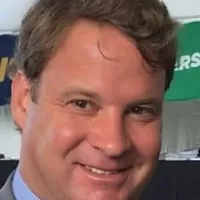
Lane Kiffin is an American football coach currently serving as...

Candace Owens is an American conservative political commentator and author...

Ilhan Omar is an American politician currently serving as the...
